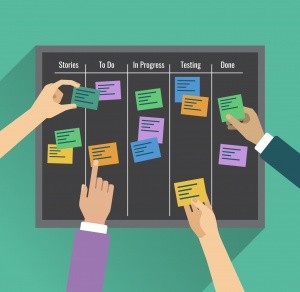
Task Management Best Practices Start the discussion!

What is Task Management?
Task Management is the process of managing tasks through their set duration. It includes planning, testing, timing, tracking your tasks and progressing with your daily work. Task Management can be used by both individuals and groups who have project management goals they would like to achieve. Tasks can be managed in many ways, often by the use of online software or a mobile application. Daily tasks can vary in their complexity dependent on your needs.
Task Management Techniques
Task Management Techniques have changed over the years. Task Management used to consist of a to do list requiring a pad and pen, whilst now businesses have an easy access to online task management software. This way they can efficiently manage multiple projects at the same time.
Online task tracking software has integrated methods and models that compliment task management, such as the Kanban Workflow Management Method and the Gantt chart:
1/ the Kanban Workflow Management: a way to visualize your workflow, separating your project into categorised task lists outlining the project stages. A common example: assigning tasks to the following columns: ‘To do’, ‘In Progress’ and ‘Completed’.
2/ the Gantt chart is used for project scheduling and provides an overview of tasks on a timeline. It enables managers to define dependencies between tasks and set the critical path.
Both the Kanban and the Gantt chart are useful for providing an overview of task progression.
Most Popular Task Management Tools and Features
Most Popular Task Management Tools and Features included in task organizers are as follow:
1/ task and sub-task creation,
2/ task assignment,
3/ estimating task duration: e.g. setting the deadline, establishing the milestones, and setting a time frame,
4/ setting reminders,
5/ sorting tasks: e.g. many task management tools offer the creation of task lists for project time tracking purposes; you can create task lists according to the milestones of your project,
6/ setting re-occurrences: e.g. Useful if you have a task that you complete regularly; for example, on a weekly or monthly basis,
7/ task overview: e.g the Gantt chart and the Kanban method, used to provide a task overview.
Online software types vary from being marketed for free or for a premium price.
A few examples of task management apps together with to-do-list features include:
Wimi, Asana, Slack, Jira, Monday, Trello, Wrike, Wunderlist.
Why is Efficient Task Management Important?
Individuals or groups set tasks to achieve their project related goals; ‘It has been demonstrated that having a written plan of action increases productivity’ (J. Becher,2016). Hence, the main objective for task management is to efficiently reach your project goals before the deadline.
Managing several projects at one time requires tools that facilitate easy management of tasks through better organisation and planning.
The key elements of efficient task management are the following:
1/ Visualization.
2/ Task delegation.
3/ Time management.
4/ Prioritization and milestone setting.
5/ Increasing Productivity.
How Best to track Team Task Management?
To implement efficient Task Management into your professional projects, take into account the following steps:
1/ Find a task tracker tool.
2/ Make a virtual to-do-list of tasks.
3/ Enrich your tasks with as much detail as possible (e.g. sub-tasks, documents).
4/ Set a deadline.
5/ Apply positive reinforcement: when tasks have been completed in time respond positively to your colleagues.
6/ Take Discipline for failure to meet deadlines.
Read More on the Topic of Task Management:
Most popular Best Practices
 Maximise communication and efficiency with this superb, automated template. Manage your workflow with ease!2,961Discussadd_shopping_cart$49.00
Maximise communication and efficiency with this superb, automated template. Manage your workflow with ease!2,961Discussadd_shopping_cart$49.00 by Adnia Solutions
by Adnia Solutions

Effective Work Checklist Template with Graphical Representation - Easy Editable with tasks
Create Super Easy Work Checklist with Graphical Representation299Discussadd_shopping_cart$5.00 by Mubbasshir AR
by Mubbasshir AR

Commercial Excel Project Manager
Excel based robust but easy to utilise Project And Task manager tool.2952add_shopping_cart$16.00 by Jack Avon
by Jack Avon

BE-TMT (Braathe Enterprises Task Management Template)
A pdf template for helping manage your tasks459Discusslibrary_addfree by Robert Braathe
by Robert Braathe

5 Steps To Make To-Do Lists Actually Work
A short video on how to actually DO the tasks written in your to-do list, and how to become organised as a result.177Discussfree by George Kao
by George Kao

How to Keep Track of Critical Tasks that Must be Completed After Raising Seed Capital (Checklist)
There are things that must be completed after a round closes that many founders forget about. Don't be one of them!168Discusslibrary_add








